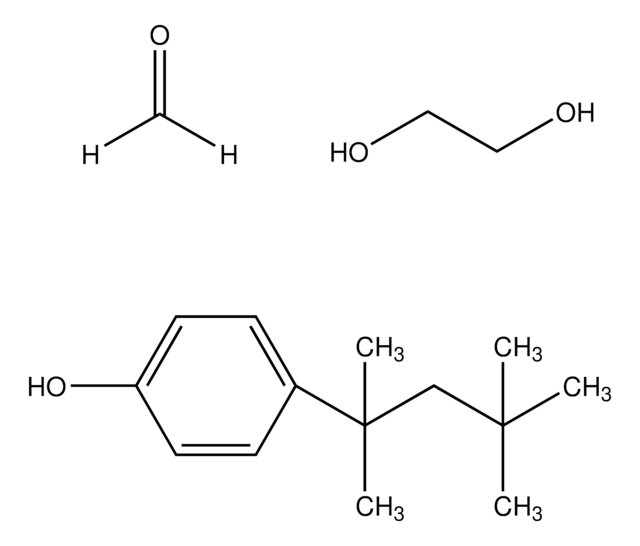5.08162
Loperamide Hydrochloride
Synonim(y):
Loperamide Hydrochloride, µ-Opioid Receptor Agonist, Loperamide Hydrochloride, Imodium
About This Item
Polecane produkty
Próba
≥99% (HPLC)
Poziom jakości
Formularz
solid
siła działania
2 nM Ki
producent / nazwa handlowa
Calbiochem®
warunki przechowywania
OK to freeze
protect from light
kolor
white
rozpuszczalność
DMSO: 50 mM
ethanol: 50 mM
temp. przechowywania
2-8°C
InChI
1S/C29H33ClN2O2.ClH/c1-31(2)27(33)29(24-9-5-3-6-10-24,25-11-7-4-8-12-25)19-22-32-20-17-28(34,18-21-32)23-13-15-26(30)16-14-23;/h3-16,34H,17-22H2,1-2H3;1H
Klucz InChI
PGYPOBZJRVSMDS-UHFFFAOYSA-N
Opis ogólny
Działania biochem./fizjol.
u opioid receptor
Ostrzeżenie
Uwaga dotycząca przygotowania
Rekonstytucja
Inne uwagi
Di Bosco, M., et al. 2008. Chem. Biol. Drug Des.71, 328.
DeHaven-Hudkins, D., et al. 1999. J. Pharmacol. Exp. Ther.289, 494.
Mackerer, C., et al. 1976. J. Pharmacol. Exp. Ther.199, 131.
Informacje prawne
Hasło ostrzegawcze
Danger
Zwroty wskazujące rodzaj zagrożenia
Zwroty wskazujące środki ostrożności
Klasyfikacja zagrożeń
Acute Tox. 3 Oral
Kod klasy składowania
6.1C - Combustible, acute toxic Cat.3 / toxic compounds or compounds which causing chronic effects
Klasa zagrożenia wodnego (WGK)
WGK 3
Temperatura zapłonu (°F)
Not applicable
Temperatura zapłonu (°C)
Not applicable
Certyfikaty analizy (CoA)
Poszukaj Certyfikaty analizy (CoA), wpisując numer partii/serii produktów. Numery serii i partii można znaleźć na etykiecie produktu po słowach „seria” lub „partia”.
Masz już ten produkt?
Dokumenty związane z niedawno zakupionymi produktami zostały zamieszczone w Bibliotece dokumentów.
Nasz zespół naukowców ma doświadczenie we wszystkich obszarach badań, w tym w naukach przyrodniczych, materiałoznawstwie, syntezie chemicznej, chromatografii, analityce i wielu innych dziedzinach.
Skontaktuj się z zespołem ds. pomocy technicznej





